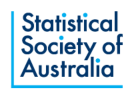|
Science & Technology Australia Media Release
Widespread job insecurity, a spike in workloads and fatigue, and devastating job losses are eroding the morale of Australia’s science workforce at a time when we need science at its strongest, new research has found.
The ual Professional Scientists Employment and Remuneration Report by Science & Technology Australia and Professional Scientists Australia reveals the mounting toll on scientists of the pandemic and longer-term chronic job insecurity.
This year’s survey lays bare a steep drop in morale amid growing exhaustion, mounting workloads and job insecurity from short-term work contracts and the high stakes lottery of science careers relying on competitive grants.
Science & Technology Australia Chief Executive Officer Misha Schubert said Australia’s scientists desperately needed better job security.
“There’s a huge risk that many more of our brilliant scientists will hit breaking point and just walk away if we don’t fix this broken system of insecure work,” she said.
“We need stronger investment in science such as a $2.4 billion Research Translation Fund and much greater job security for scientists to avert a disastrous loss of talent and pursue a science-led recovery.”
“This year’s federal Budget is a legacy-defining opportunity for a lifeline for Australian science.”
Science & Technology President Associate Professor Jeremy Brownlie said the “pincers of the pandemic and precarious work” were taking a brutal toll on scientists.
“Australia’s scientists have prevented a vast number of deaths in this pandemic - yet our country isn’t supporting them nearly well enough in return,” he said.
“We’re seeing rising levels of fatigue, a bleak drop in morale, and widespread job insecurity with job losses at universities and precarious short-term contracts.”
Nearly two-thirds of scientists surveyed said morale at their workplace had fallen in the last year - a steep spike up from one in two who said morale fell in 2020.
And seven in ten scientists said fatigue levels had risen this year - another steep rise from the five in ten who said the same last year.
Almost one in four scientists in today’s survey said they were on a fixed-term contract, with an average length of 18 months, offering very little job security.
Modelling by Universities Australia estimated 17,300 jobs were lost at universities in 2020, a devastating toll fuelling workloads and job insecurity for staff who remain.
Key findings from this year’s scientists survey include:
· 62.5 per cent of scientists surveyed said morale fell in their workplace in the last year. That’s a big jump from 45.8 per cent in 2020.
· 70.6 per cent of scientists said fatigue had risen over the past year - up from 54.6 per cent in 2020.
· One in four scientists surveyed were on fixed-term work contracts, with an average contract length of just 18 months.
· 39.4 per cent of scientists have not had a pay increase in the last 12 months (with pay freezes at many universities amid the pandemic’s financial hit).
· Women scientists earn just 82.8 per cent of male scientists’ salaries - a gender pay gap of 17 per cent.
· One in five scientists (19.9 per cent) indicated they plan to leave the profession entirely in coming years. This figure was 18.3 per cent in 2020.
· Scientists are working an average of 7.5 hours overtime each week. 58.9 per cent said they received no extra pay or compensation for overtime.
Science & Technology Australia and Professionals Australia run this survey every year to gather accurate data on salaries and workplace conditions.
The survey of 1,275 professional scientists ran in June 2021.
The full report is here.
Media contact: Martyn Pearce, Science & Technology Australia - 0432 606 828
If you or anyone you know needs help:
Lifeline on 13 11 14
Beyond Blue on 1300 224 636 or its COVID-19 support service 1800 513 348
Headspace on 1800 650 890
|
